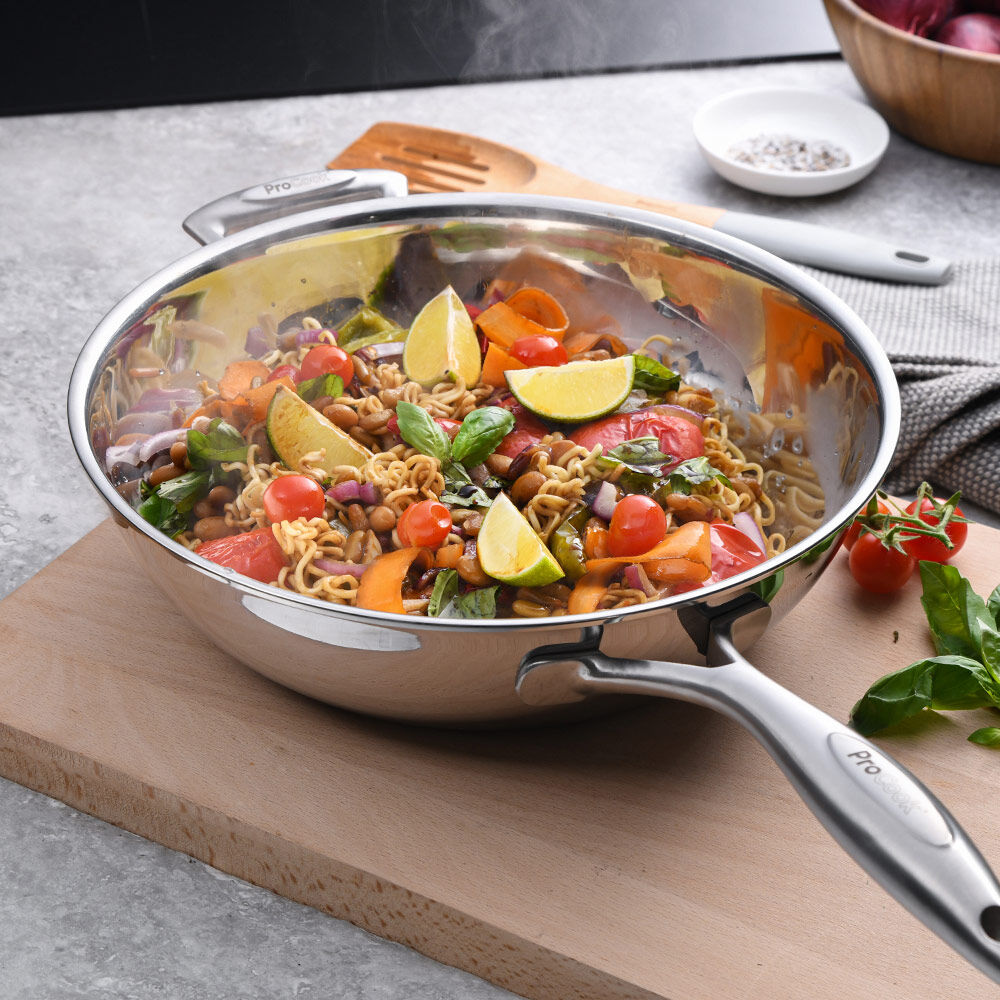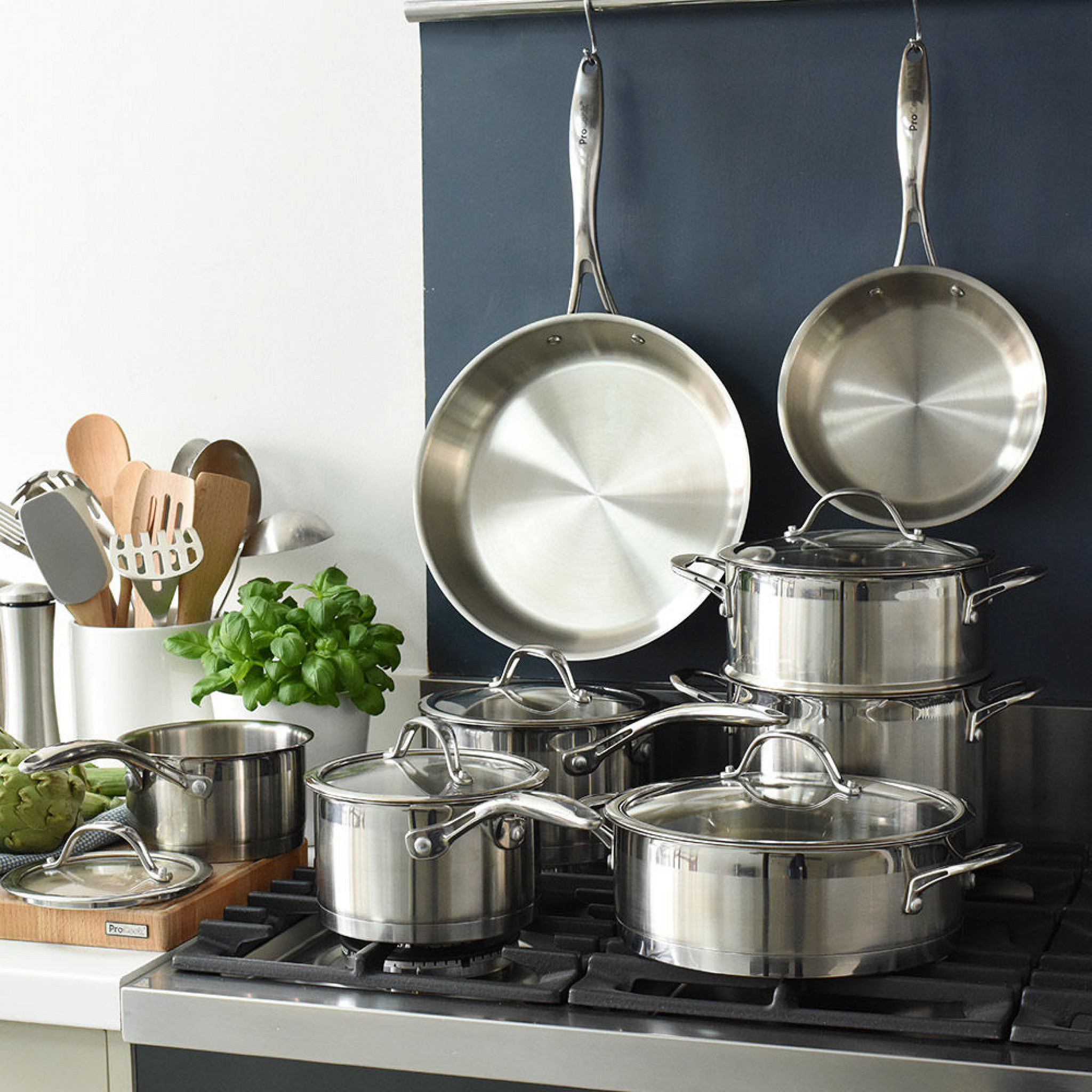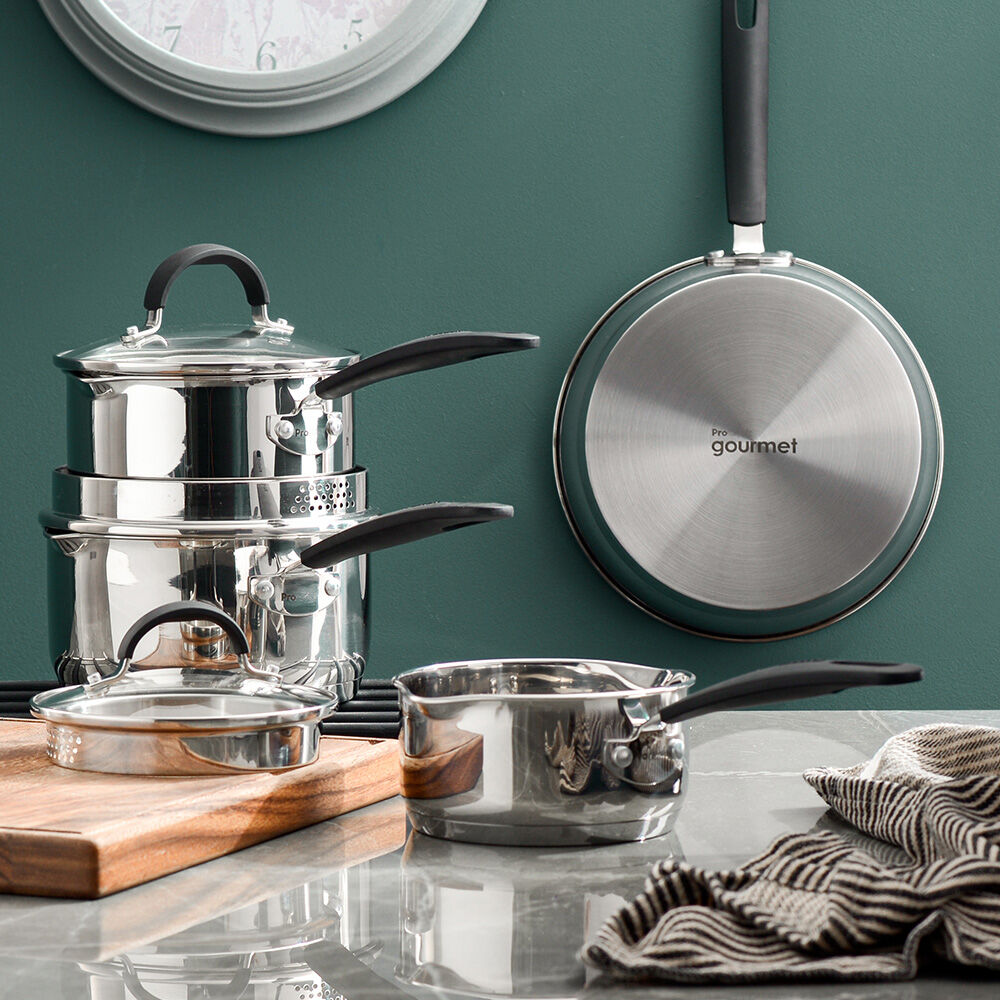ProCook Help Hub
The latest inspiration and advice from the experts at ProCook
Cooking with stainless steel can be great for many reasons. Not only are
stainless steel pots and pans lighter than cast iron, but stainless steel cookware can be a
workhorse in the kitchen. It is these benefits that make cooking with stainless steel pans
incredibly popular amongst chefs and home cooks. However, when it comes to cooking with
stainless steel, proper upkeep and cooking techniques can help you make the most out of your
stainless steel cookware.
Our handy stainless steel guide explores the following topics: the benefits of
stainless steel, how to season stainless steel pans, how to cook with stainless steel, and
how to clean and care for your cookware. Read on for useful stainless steel cooking
tips.
Benefits of Stainless Steel Cookware
With so many
different types of cookware, why should you choose stainless steel over ceramic, aluminium or
non-stick? While it all comes down to personal preference, stainless steel cookware has numerous
benefits, making it a top cookware choice for professional chefs. For starters, one major reason
why professional chefs prefer stainless steel over non-stick cookware is that many non-stick
pans cannot hold up to the intensity of a professional kitchen. High heats are common, as well
as the use of metal utensils which are damaging for non-sticking coated cookware.
Other advantages of stainless steel include:
- More lightweight than cast iron
- Non-reactive
- Oven safe
- Perfect for browning and hard searing foods
Is Stainless Steel Good to Cook With?
While stainless
steel cookware may not be as forgiving as non-stick pans (higher risk of food sticking to the
pan), they can help produce superior results. Chefs love stainless steel cooking surfaces as you
can achieve wonderfully tasty and caramelised results, whether it's caramelising your
chopped onions or a chicken breast. Stainless steel offers excellent durability, can withstand
high heat, and offers fantastic heat retention - making it a favourite amongst many kitchens.
Although stainless steel cookware can be considered a
poor conductor and distributor of heat, our stainless steel ranges feature an impact bonded base
that aids in heat distribution, so you can enjoy the best results possible.
Is Stainless Steel Uncoated?
Not all
stainless steel is uncoated - some stainless steel comes with a non-stick coating. However,
uncoated stainless steel is a popular choice in various kitchens. As the name suggests, uncoated
stainless steel is just that - free from any coating. You can read more about uncoated cookware
from our dedicated guide What is Uncoated Cookware?
As with any
type of cookware, cooking with stainless steel requires specific methods and techniques. Proper
cooking techniques can protect the longevity of your stainless steel cookware and help you get
the most out of your pots and pans.
How to Cook with Stainless Steel
Whether you're cooking with a stainless steel saucepan, frying pan, or wok, keep the following cooking tips in mind.
1. Always Preheat
Place your empty stainless steel pan on a burner over medium heat and let the pan heat up for 2 to 3 minutes. Cold stainless steel is porous, and these pores cause food to stick more easily. By heating your pan, you are making your stainless steel pans less porous.
2. Oil After Preheating
Add oil to the pan once it has preheated. If you add the oil while the pan is too cold, the oil will settle into the pan's pores and be less effective when decreasing the chance of food sticking to the pan's surface. When adding the oil, take the pan off the heat, add your oil, and swirl it around so it lightly covers the pan's entire surface. The oil will heat very quickly.
3. Cook With Room Temperature Foods
Allow your food to reach room temperature before adding it to your stainless steel pans. By adding cold food to your pan, you drastically drop the pan's temperature which can lead to food sticking. The best way to get your food to room temperature is to remove the food from the fridge before cooking it.
5. Test the Pan's Temperature
Before adding the oil, test the temperature of the pan. You can do this by dropping a small amount of food or a drop of water into the pan. If you hear a 'TSS' sound, as if the pan is sizzling, it's ready to use.
6. Be Patient
If you're
searing meat, be patient. The pan will let you know when the meat is ready - it simply
won't stick. This is because once the meat is properly seared and has developed that
perfect crust, the pan can no longer grab onto the meat. The pan will then release the meat,
making it incredibly easy to flip.
ProTip:
If you do have to check your meat, make sure not to forcibly lift it if it feels like
it's sticking. If the meat feels 'sticky,' it simply needs more cooking time.
7. Use the Stuck-On Bits of Food for Sauces
One of the main selling points of stainless steel is that bits of food does stick to the pan's surface. These stuck-on pieces of food can help you make tasty sauces and gravies, adding flavour and depth. In fact, the stuck-on bits of food can be considered the base of your sauce.
Tips for Cooking with Stainless Steel
Pots and Pans
How to Season Stainless Steel Pans
While seasoning
can be common amongst cast iron cookware, it is not required with stainless steel cookware. As
mentioned above, adequate preheating, using oil properly, and cooking with room temperature food
can help combat food sticking to your pan's surface. Proper care can also help keep your
pots and pans in good working order, too.
Do I Need to Season ProCook Stainless Steel?
All our stainless steel cookware ranges do not require seasoning. Simply wash before first use and follow the cooking and care guidelines provided for the best results. Avoid using hard and abrasive cleaning tools on your cookware as this can cause damage to your pan's surface and impact its cooking ability.
Check out some of our best selling stainless steel cookware:
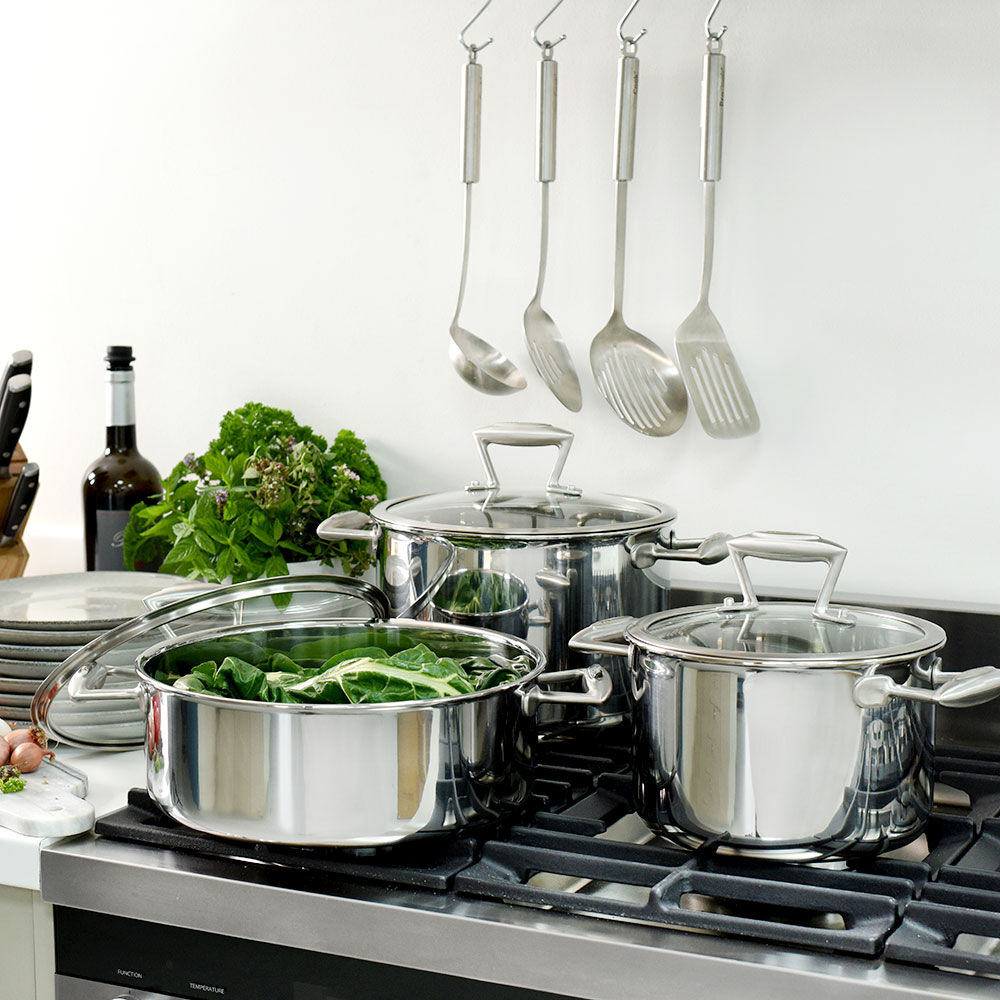
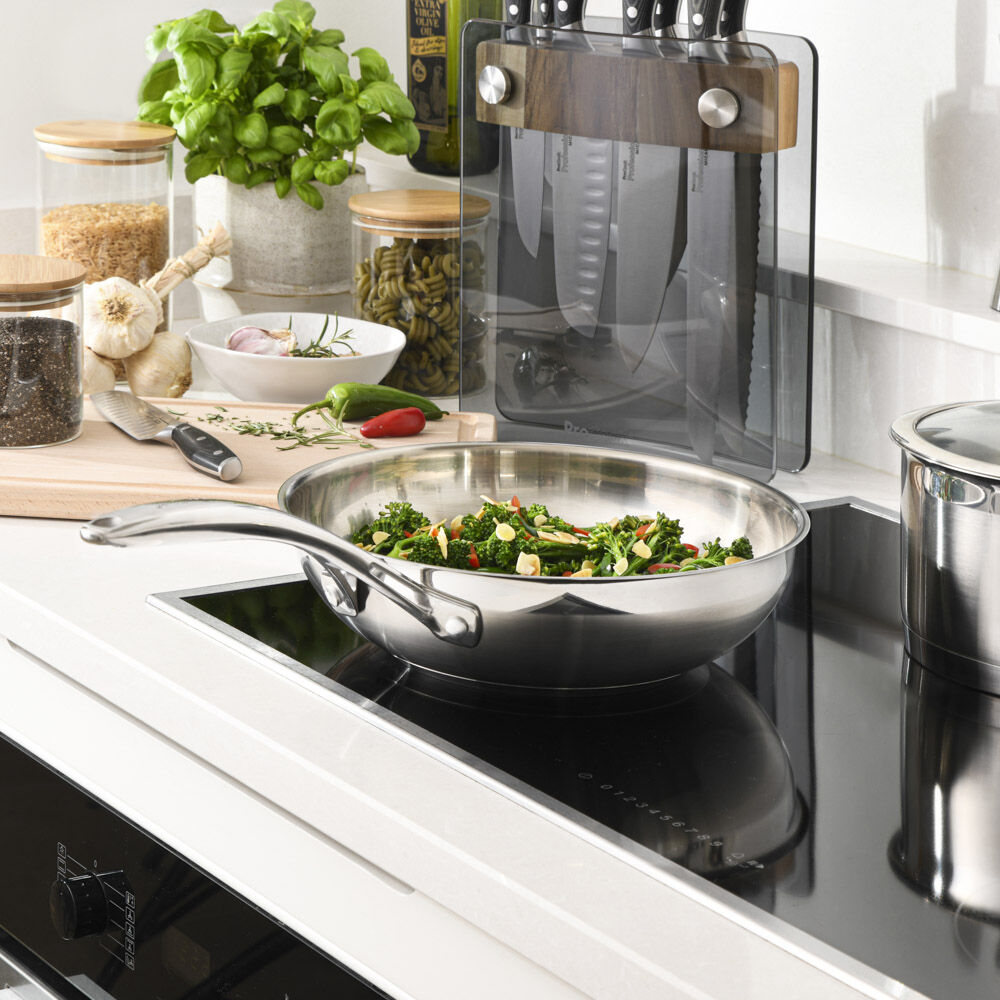

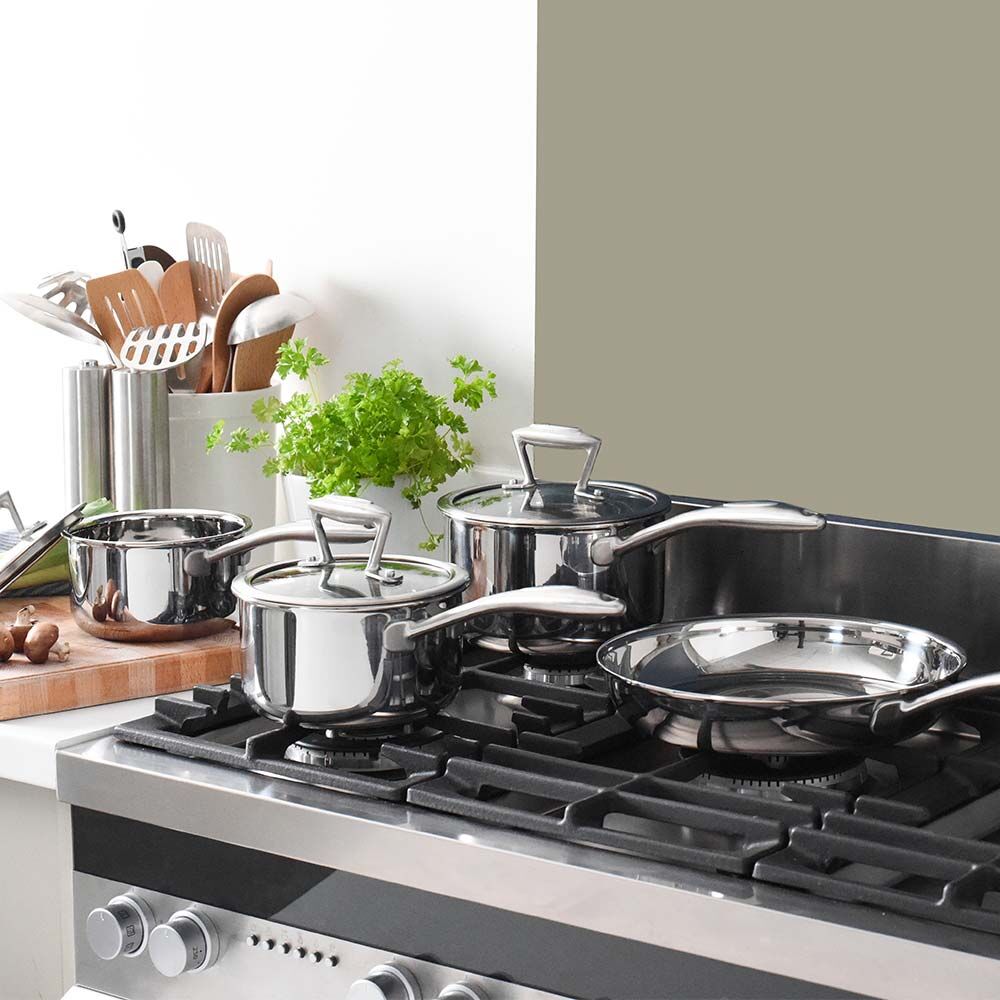
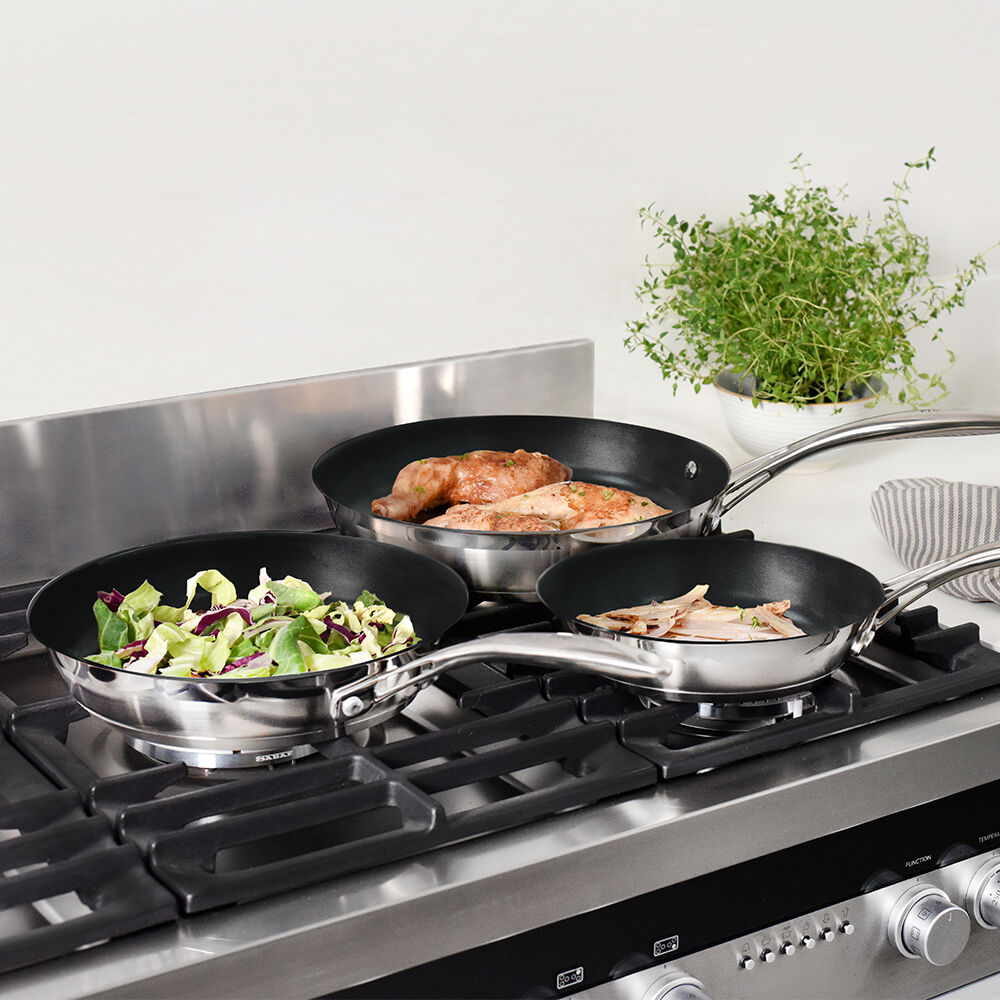
Are stainless
steel pans oven safe? While you should always check the guidelines of your chosen stainless
steel, more chances than not, your stainless steel cookware will be oven-safe to a specific
temperature.
At ProCook, our stainless steel cookware can withstand oven
temperatures of 260C - we do not recommend exceeding these temperatures, however, and as always,
please read the instructions before using.
Can Stainless Steel Go in the
Oven?
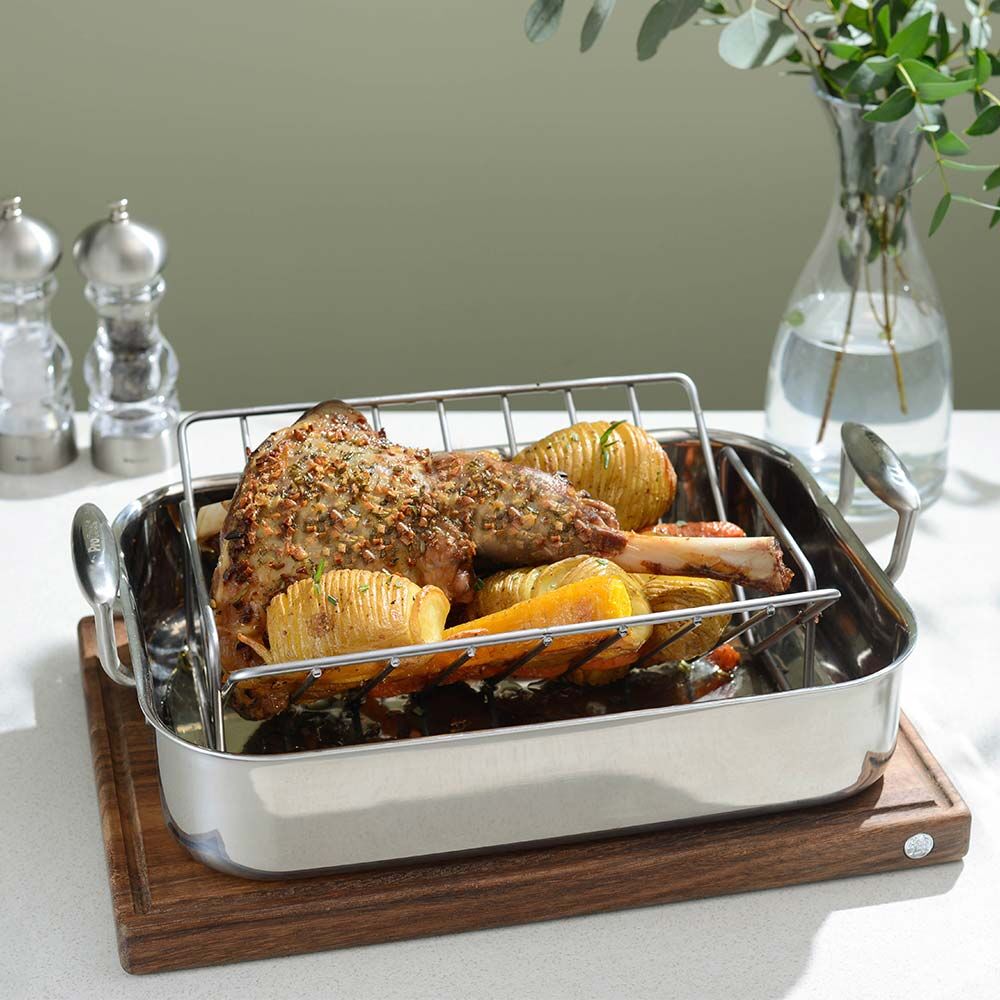
How to Keep Food from Sticking to
Stainless Steel
By following
the stainless steel cooking tips listed earlier on (preheating beforehand, using oil once the
pan is hot, and cooking with room temperature food), you can reduce the chances of your food
sticking to the pan's surface. However, any stuck-on bits of food can be used to make
sauces - a win-win situation.
Is Stainless Steel Induction
Compatible?
Stainless steel
cookware works on an induction hob if the base of the cookware is magnetic. Therefore, always
check for the 'induction' symbol before purchasing. If your stainless steel cookware
is not made with induction cooking in mind, then you may experience uneven and poor cooking
results. Unsure of how induction cooking works? Check out our guide on How
Does Induction Cooking Work?
Most of our stainless steel ranges are induction
compatible, so you can enjoy consistent cooking results every time.
How to Care for Stainless Steel Pans
Stainless steel
cookware is incredibly long-lasting - if it's cared for properly, of course. Here are our
best stainless steel care tips, so you can continue to enjoy your stainless steel cookware for
many years to come.
Allow Your Pots and Pans Time to Cool Down
This tip isn't specific to stainless steel - it should be applied to all cookware. Avoid warping your cookware by allowing it to cool down before cleaning. While you are waiting for your cookware to cool down, wipe away any residual oil or bits of food with a paper towel (but only if it is safe to do so).
Check Whether Your Cookware is Dishwasher Safe
While more cookware than not is now dishwasher safe, always double check. You may also be more comfortable handwashing your stainless steel, as long cycles of high temperature can cause damage to your pots and pans.
Keep Your Stainless Steel Dry
If wet for too
long, your stainless steel will start to rust. Always ensure it's completely dry after
it's been washed and stored away. When storing, keep it in a place that's free from
moisture and direct sunlight.
ProTip:
Make sure to keep your cookware looking new, so it can continue performing to the best of
its ability. Each cookware material has its own guidelines, so feel free to read our general
cookware care guide for further information that is sure to protect the quality and longevity of
your cookware.


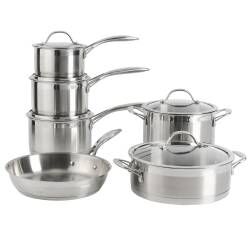
 Electricals
Electricals
 Coffee
Coffee
 Mixers and Blenders
Mixers and Blenders
 Kettles and Toasters
Kettles and Toasters
 Cooking
Cooking
 Small Appliances
Small Appliances
 Cookware & Bakeware
Cookware & Bakeware
 Pots and Pans
Pots and Pans
 Speciality Cookware
Speciality Cookware
 Baking
Baking
 Roasting
Roasting
 Knives
Knives
 Knife Sets
Knife Sets
 Single Knives
Single Knives
 Knife Accessories
Knife Accessories
 Tableware
Tableware
 Single Items
Single Items
 Serveware
Serveware
 Table Accessories
Table Accessories
 Outdoor Dining
Outdoor Dining
 Drinkware
Drinkware
 Hot Drinkware
Hot Drinkware
 Cafetieres and Teapots
Cafetieres and Teapots
 Drink Accessories
Drink Accessories
 Accessories
Accessories
 Kitchen Utensils
Kitchen Utensils
 Tools and Gadgets
Tools and Gadgets
 Storage
Storage
 Cleaning
Cleaning
 Summer desserts and baking
Summer desserts and baking
 Offers
Offers
 Gifting
Gifting
